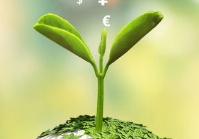- 阅读
- 阅读
- 技巧
- 百科
- 试题
- 文化
- 技能
Steelmaking has to get greener. But who'll pay?
钢铁行业必须变得更加环保。但谁来为此买单?
Dates assigned to environmental targets often seem reassuringly - or complacently - distant.
为实现环保目标定下的日期往往遥远得令人安心或自满。
By 2050, the British government has promised, the country's net emissions of greenhouse gases will be zero.
英国政府承诺,到2050年,英国将实现温室气体“净零排放”。

Many in the steel industry think the future could yet be brighter as well as greener.
钢铁行业的许多人认为,未来可能更加光明,也更加环保。
Demand is expected to grow: building wind turbines, for example, will require lots of steel.
预计需求将会增长:举例来说,建造风力涡轮机将需要大量钢材。
Britain exports around 8m tonnes of scrap a year, much of which could be fed to EAFS.
英国每年出口约800万吨废料,其中大部分可以用电弧炉冶炼。
Steel companies will nevertheless be loth to invest without two sorts of government help.
然而,如果政府不提供下述两种援助,钢铁公司不会愿意进行投资。
One looks more likely than the other.
其中一种援助实现的可能性更大。
The first is a hefty subsidy for the switch to greener steelmaking.
第一种是为钢铁公司提供巨额补贴,帮助它们向更环保的炼钢方式转变。
Canada, France, Germany, Spain and others are already doling out plenty for both EAFS and hydrogen-powered direct reduction.
加拿大、法国、德国、西班牙和其他国家为了让钢铁公司使用电弧炉和氢气直接还原技术而提供了大量资金。
Cash is on offer in Britain too: 300m Pounds each, it is said, for Tata and British Steel, coupled with a carbon border tariff, similar to one being concocted in the European Union, to keep out dirtier imports.
英国也在提供资金:据说,塔塔钢铁和英国钢铁公司各获得了3亿英镑的资助,再加上碳边境税(类似于欧盟正在制定的关税),以阻止更肮脏的进口。
But that is less than the companies were asking for a few months ago, looks less generous than elsewhere - the French are putting 1.7bn Euros ($1.8bn) into two sites - and may depend on job guarantees.
但这些资金没有达到两家公司几个月前提出的要求,看起来也没有其它国家那么慷慨——法国将在两个地点投入17亿欧元(合18亿美元)——而且可能取决于工作保障。
The second is much cheaper electricity.
第二种援助是更低的电价。
UK Steel, the industry's trade body, calculates that steelmakers in Britain pay far more than those in France and Germany, which face much lower power-grid charges and “policy” costs such as environmental levies.
钢铁行业的行业组织英国钢铁协会计算出,英国钢铁制造商的支出远远高于法国和德国的钢铁制造商,后者要支付的电费和环境税等“政策”成本比英国低得多。
Switching to EAFS, which use a lot more electricity than old-fashioned furnaces, will make this hurt all the more.
改用比老式炼炉耗电多得多的电弧炉,会让情况更加糟糕。
Although the government is providing discounts to businesses to dampen the steep rise in wholesale energy prices, UK Steel complains that British steelmakers can still expect to pay around 60% more in 2023-24 than the Germans, who have been guaranteed a lower price.
尽管英国政府正在为企业提供折扣,以抵消飙升的能源批发价格,但英国钢铁协会抱怨称,德国钢铁公司获得了能源价格进一步降低的保证,2023-2024年,英国钢铁制造商仍可能比德国钢铁制造商多付出约60%的成本。
Would it matter if the steel industry faded away?
如果英国的钢铁行业消失了,会有什么大不了的吗?
Perhaps not.
可能没什么大不了。
Britain is a small steelmaker these days, 27th in the world, below Austria and Belgium.
如今,英国只是一个小型钢铁生产国,在世界上排名第27位,位于奥地利和比利时之后。
It imports more than half of its steel already.
英国一半以上的钢铁都是进口的。
But decommissioning and redundancy are also far from costless.
但老式炼炉的正式停用和裁员也要付出巨大代价。
Steel towns would lose jobs that pay better than the national norm.
钢铁城里工资高于全国标准的工作岗位将会消失。
And steel, like energy, is something for which few governments like to rely wholly on foreigners.
和能源一样,大多数政府不愿完全依赖于国外进口钢铁。
Steelmaking in Britain has muddled through for years.
多年来,英国的钢铁生产一直在蒙混过关。
It may end up doing so again.
最终,它可能还会这样做。
来源:经济学人
参与评论